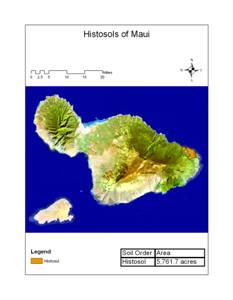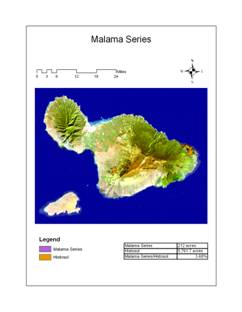Organic Soil (Histosol)
Typical Characteristics
- Parent Material: Organic soils are formed by the accumulation of partially decomposed organic matter. These soils have undergone little profile development, due to the anaerobic environment (absent of oxygen) that persists. Organic soils contain more than one layer of organic soil material, typically in the upper 80 cm of the soil profile.
- Climate and Distribution: Organic soils are most common in moist, cool areas, such as wetlands of Canada, but may be found in warm environments. Organic deposits in marshes, bogs, and swamps are common examples, but their formation is not strictly limited to wetlands.
- Physical Traits: These soils are dark in color, lightweight, and have extremely high water holding capacities. In fact, Organic soils may hold 200 – 400% of its own dry weight in water.
- Productivity: Many organic soils on the continental United States have been drained and mined for agricultural use. These soils can be very productive, but require very different nutrient management strategies than other soil orders.
Organic Soils of Maui:
Wet/dry organic soils with leaf mat accumulations (Ustifolist)
Wet organic soil with leaf mat accumulations (Udifolist)
- Malama Series
- Opihikao Series
Unique Characteristics of Organic Soils of Maui County:
Most of Maui’s organic soils are forested, wildlife habitats. Other organic soils are found in residential areas or used to supply water. However, the Malama Series is an organic soil that is has some agricultural significance.
- Location: The Malama series are upland organic soils located in East Maui at elevations between sea level and 1,000 ft.
- Texture: Stony muck above `a`a lava flow
- Rainfall and Temperature: The average annual rainfall is 60 to 90 inches, and the average annual temperature is 72 degrees F.
- Slope: Gentle to moderate
- Parent Material: Organic matter deposited onto ‘a’a lava.
- Depth: Malama soils are typically shallow. Surface soils typically extend 8 inches. Under the surface layer, `a`a lava flows extend approximately 24 inches.
- Physical Traits: The surface layer is characterized as shallow, stony black muck. The soils have excessive drainage, very rapid permeability, and slow runoff.
- Color of surface Horizon: Black muck
- Natural vegetation: Forest species.
- Agricultural Use: While mostly used to supply water, the Malama Series have been used in pasture and orchards.
Data for the Malama Series in Maui is not available.
|


